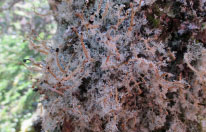Heatwave devastates wildlife populations in World Heritage Site
By Florida International University 4/27/2019 Large numbers of dugongs, sea snakes and other marine animals disappeared from the UNESCO World Heritage Site Shark Bay, Western Australia, after a heat wave devastated seagrass meadows, according to recently released research. The reasons for the population losses, however, differed among species, according to Rob Nowicki, an FIU alumnus and postdoctoral research fellow at…

